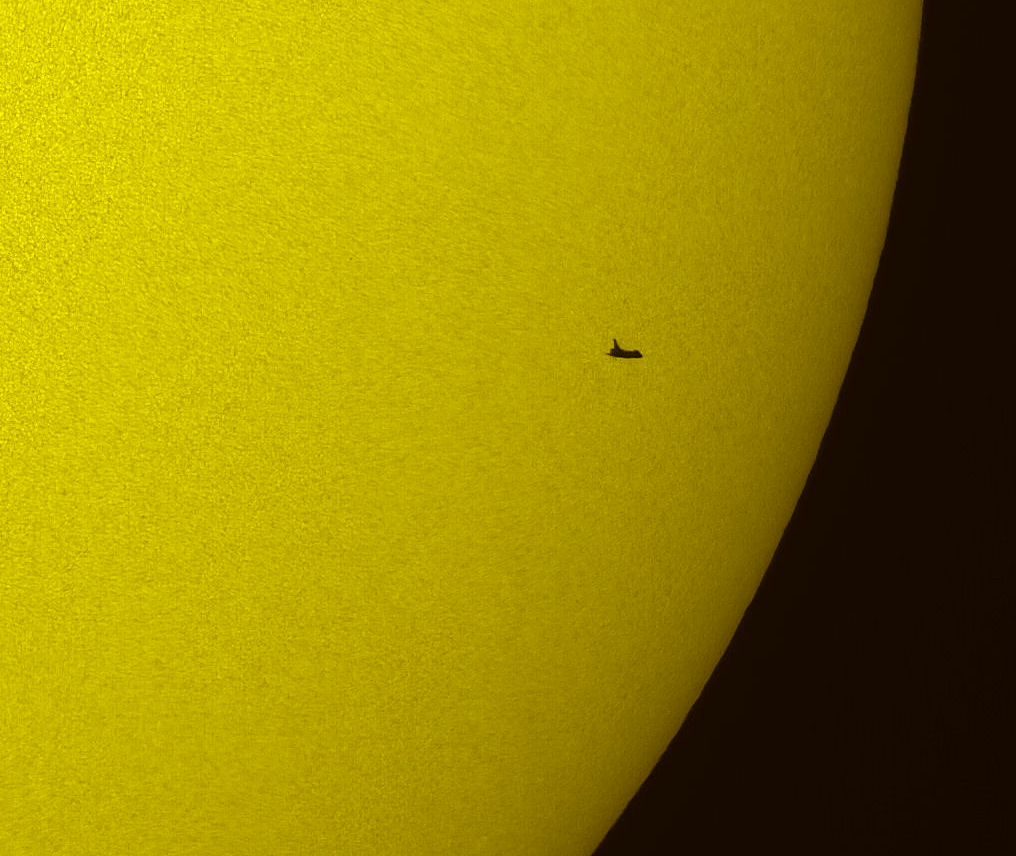You are using an out of date browser. It may not display this or other websites correctly.
You should upgrade or use an alternative browser.
You should upgrade or use an alternative browser.
STS-125 Shuttle Mission to Service Hubble Space Telescope Launches on Monday 7pm
- Thread starter Nate--IRL--
- Start date
More options
Thread starter's postsHD Files x264 encoded
STS 125 Launch http://files.filefront.com/13750719 616MB
Flight Day 1 Highlights http://files.filefront.com/13749514 350-400MB
Flight Day 2 Not available in HD... yet
Flight Day 3 http://files.filefront.com/13755044 410 MB
STS 125 Launch http://files.filefront.com/13750719 616MB
Flight Day 1 Highlights http://files.filefront.com/13749514 350-400MB
Flight Day 2 Not available in HD... yet

Flight Day 3 http://files.filefront.com/13755044 410 MB
EVA update - they started late and are in trouble with a stuck bolt. Not sure what they're going to do as they're just trying lots of tools and none are doing anything. Usually when this happens they end up getting the big tools out with two astronauts on the end and forcing it. Don't think that's an option this time though because the bolt is down the bottom of a big hole.
The clock is of course ticking and they're well behind.
Edit - bolt released. Now the question is, did they break it in the process (that would be game over for the new camera). We'll find out soon.
Edit2 - The bolt is fine. \o/
The clock is of course ticking and they're well behind.
Edit - bolt released. Now the question is, did they break it in the process (that would be game over for the new camera). We'll find out soon.
Edit2 - The bolt is fine. \o/
Last edited:
And the white area about a third of the way up the telescope is the WFPC2 that has just been removed. Thankyou for 16 years of brilliant service. Most of the eye candy we've seen from Hubble over the years came from this camera.
WFC3 is currently on its way towards the telescope to replace it.
WFC3 is currently on its way towards the telescope to replace it.
Last edited:
Atlantis docked with Hubble
Higher resolution picture Here
Amazing picture.
Associate
- Joined
- 21 Feb 2006
- Posts
- 1,644
- Location
- Southampton, UK
is there no videos of them grabbing hubble?
Goto http://www.nasa.gov/ click on video on demand to the lower left, you can watch it there, its worth watching some of the live also, is exciting at times.
Breathtaking stuff.
The coverage is really good and I'm enjoying watching the videos.
Quick question, why is there no visible stars?
The light from distant Stars is very faint, even in space. A quick snap wont capture light from distant stars.
I recently captured an image of the Horse head Nebula, it took me something like 4 hours exposure time to see it, from Earth of course.
As above, you need a long exposure to get decent images of the night sky. We still don't have the technology to make a camera that's close to as good as the human eye.
In this particular circumstance, it's the same problem you see in built-up areas. In a daylight pass, earth shine will knock out any chance of seeing stars. In a night pass, the payload bay lights will be on, with the same results.
PS - the Hubble deep field took an exposure of 10 days. Extreme example, yes, but a demonstration of just what it can take to get decent imagery.
In this particular circumstance, it's the same problem you see in built-up areas. In a daylight pass, earth shine will knock out any chance of seeing stars. In a night pass, the payload bay lights will be on, with the same results.
PS - the Hubble deep field took an exposure of 10 days. Extreme example, yes, but a demonstration of just what it can take to get decent imagery.
Is there any hd video of the earth and space outside the shuttle/station?
Here are a few:
http://www.youtube.com/watch?v=ni5PC_Optz4
http://www.youtube.com/watch?v=eZSxdfyOmj4
http://www.youtube.com/watch?v=GYgRWDLTnSA
Very cool image of Atlantis transiting the Sun on STS-125
[/QUOTE]
Thierry Legault took this in 2006, it shows the ISS and Atlantis in transit:
[url]http://www.astrosurf.com/legault/iss_atlantis_transit.html[/url]
Last edited:





